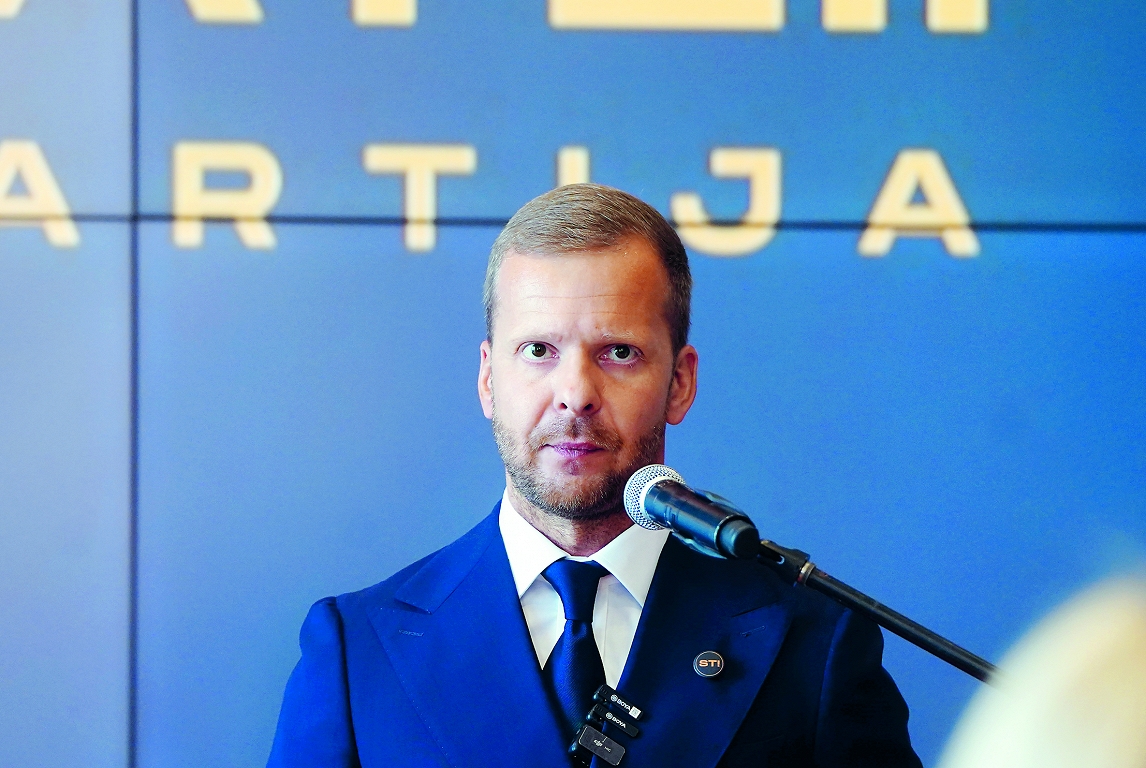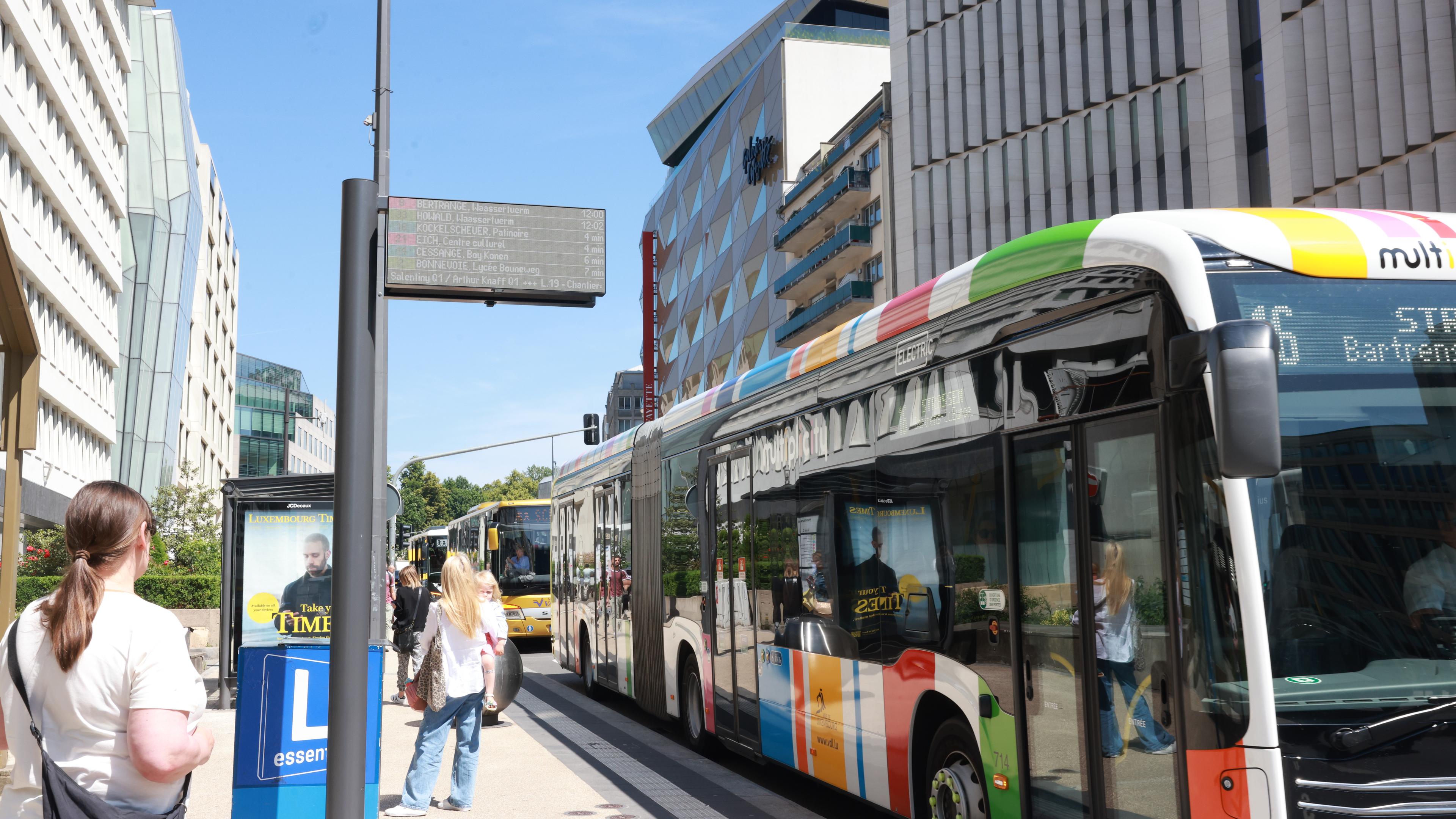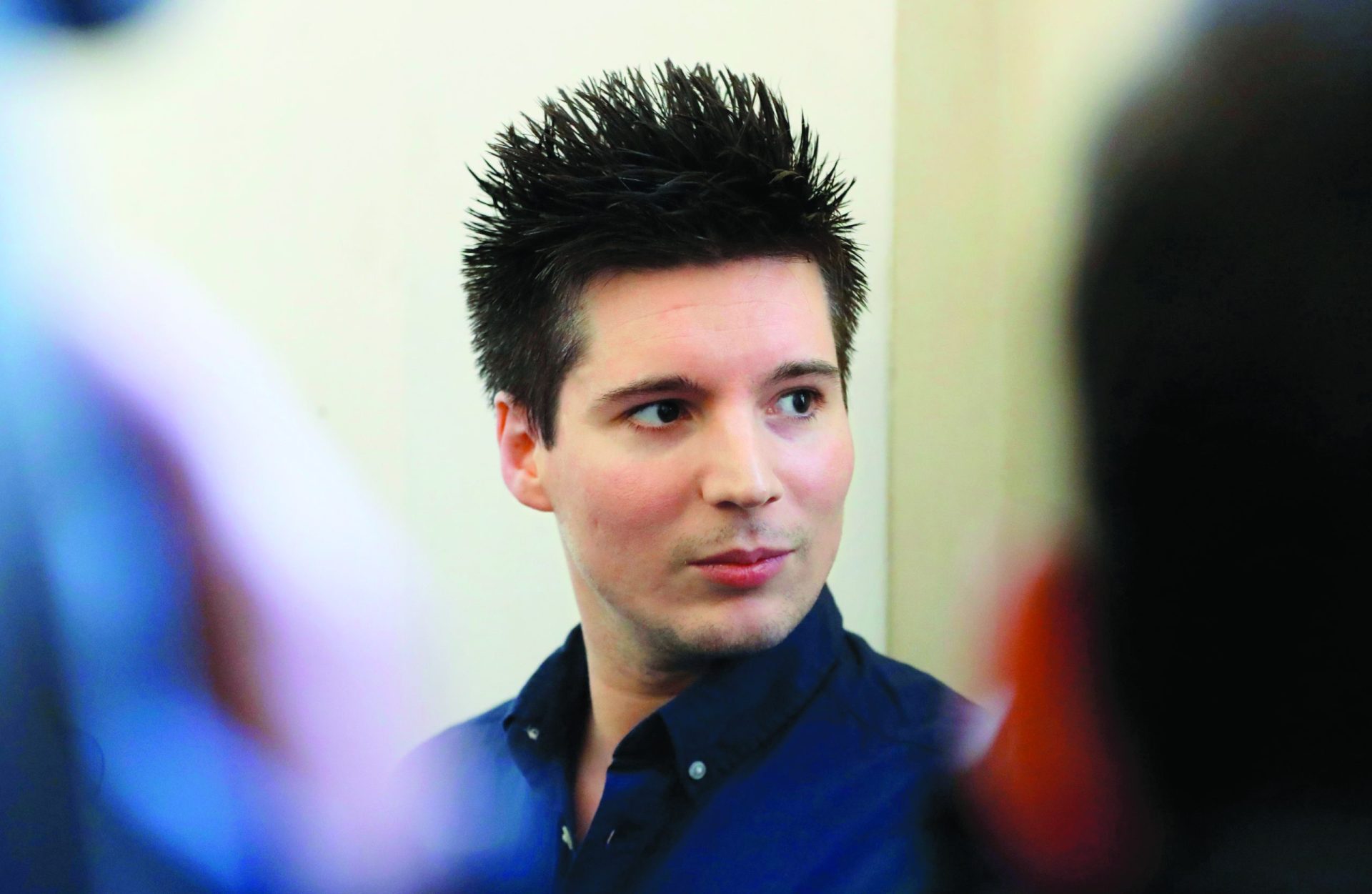Also on the day of the OV Hapert
/s3/static.nrc.nl/images/gn4/data133774397-32745f.jpg)
The lights on the train flash. The air conditioning starts to blow. « Welcome to the day of public transport express, » the intercom sounds on the train on Perron 2 of Utrecht Central.
This brand new Intercity New Generation (ICNG) has to transport the participants in the annual public transport congress to the Railway Museum on Monday morning. For the 25th time, public transport keeps one of its most important meetings of the year there.
And then the train stops.
The conductor reports again: « We cannot yet leave due to technical problems with the equipment. » The rest is unintelligible. The broadcaster installation in the new train is faltering.
It is not the first time that an ICNG, with which NS mainly drives on the HSL Zuid, is struggling with problems. The intermediate doors and the braking system in particular had many cures. They should have been resolved now.
The travelers, for the most part working in the public transport sector, encourage each other. « Technical problems … just now. And with this train. » After ten minutes the train starts up again and on the way to the Railway Museum in the former Maliebaan station.
Train strikes
The false start of the day of the public transport signs the current worrying state of public transport in the Netherlands.
Disruptions, cutbacks, falling revenues, rising costs. And the train strikes in recent weeks. On Tuesday, NS employees will resign. This time in the northwest and east of the Netherlands. Also in the rest of the country the actions harm the timetable. It is the fourth regional strike with national consequences.
Wouter Koolmees, president-director of NS, would come and talk about the future of public transport in the Netherlands in the Railway Museum. Now on Monday it was mainly about the strikes in his contribution to the congress. « Sorry, » he said twice on stage, « my head is not there this afternoon. » A week and a half the boss of the largest public transport company in the Netherlands is busy with strikes and collective bargaining. On the square in front of the museum, Koolmees must speak to all news channels about the actions in the afternoon.
On Friday, NS took a step in the direction of the unions – a little more wage, an improved heavy work scheme – but that bid disappointed the two most important trade unions. VVMC and FNV call on their members to stop again. The two smaller unions, CNV and VHS, want to talk further now.
« I am very disappointed, » says Koolmees on stage in Utrecht. He finds the attitude of the unions maddening. « Certainly in view of the current financial situation of NS. »
Koolmees lists: the yields fall, because it is still not as busy on the train as for the Covid 19-Pandemie. Moreover, the government briefly briefly on the subsidies for student transport, and the costs for personnel, equipment, energy and safety are increasing. « Moreover, the price of a train ticket has risen 10 percent less than inflation. » On Tuesday, NS will do a final offer to the trade unions, says Koolmees. That must prevent new actions.
Decaying of public transport
The concerns of NS are not unique, it turned out on Monday during the day of the public transport. All carriers in the Netherlands have the same problems, says Hatte van der Woude of OV-NL. The former Member of Parliament of the VVD has recently started the branch organization of the nine public transport companies in the Netherlands.
« I am very worried about the imminent impoverishment of public transport, » says Van der Woude. She criticizes the savings that the outgoing cabinet has enforced in recent months. « It’s swabb financing, » she says fiercely. « Public transport has great social value. You don’t have to deal with that inadently. »
OV-NL particularly acts against two cuts. The now outgoing cabinet has deleted 110 million euros a year to city transporters GVB (Amsterdam), RET (Rotterdam) and HTM (The Hague). That amounts to 10 percent of their budget; The cutback must start in 2026.
In addition, since this year the Ministry of Education, Culture and Science has been paying 225 million euros per year less in the transport of students (the former public transport student card, now Studentreisproduct, SRP). The number of students is falling and they also travel less, says the cabinet. For many carriers, the OCW contribution is a considerable part of their income, for some companies a quarter.
Top official Dylan Koenders said on stage about the discount on the city transporters: « We tried to get that discount off the table, but that didn’t work. » The city transporters hoped that the government would undo the cutback of 110 million in the Spring Memorandum. « No extra money will be found in August, » said Koenders, who is director of innovation and strategy for mobility of the Ministry of Infrastructure and Water Management (I&W), looking ahead to the Negotiations for Prinsjesdag. The budget of the outgoing cabinet becomes ‘low in policy’ anyway. That is, major changes in policy or budget are not to be expected
Partly, the provinces and the transport regions in Amsterdam and Rotterdam/The Hague close the gaps in the budget of ‘their’ regional carriers. They are the clients of public transport in their regions. However, this is at the expense of other facilities that finance provinces, such as for sports or culture.
The rest of cuts can take care of carriers in two ways, explains Hatte van der Woude of OV-NL: or the rates go up, by 10 to 15 percent, or the public transport companies cancel lines. It would then concern 20 percent of the bus, tram and metro lines compared to 2019.
Hope Putten the carriers on Monday in Utrecht from the fall of the cabinet. Former politician Wouter Koolmees (D66) claimed during the congress that he is neutral. And kept his emotions about the fall of Kabinet-Schoof.
Freek Bos of travelers’ association Rover, on the other hand, was enthusiastic about the opportunities that new elections and a new formation can offer public transport. « Public transport keeps the Netherlands accessible. It is crucial to make new homes accessible, educational institutions, hospitals. A new cabinet cannot ignore public transport. »

:format(jpeg):fill(f8f8f8,true)/s3/static.nrc.nl/taxonomy/bf9b707-commentaar-itemafbeelding-2024.png)
/s3/static.nrc.nl/wp-content/uploads/2025/06/16193937/web-1606BIN_TUe.jpg)
:format(webp)/s3/static.nrc.nl/images/gn4/stripped/data133729780-453a5f.jpg)


